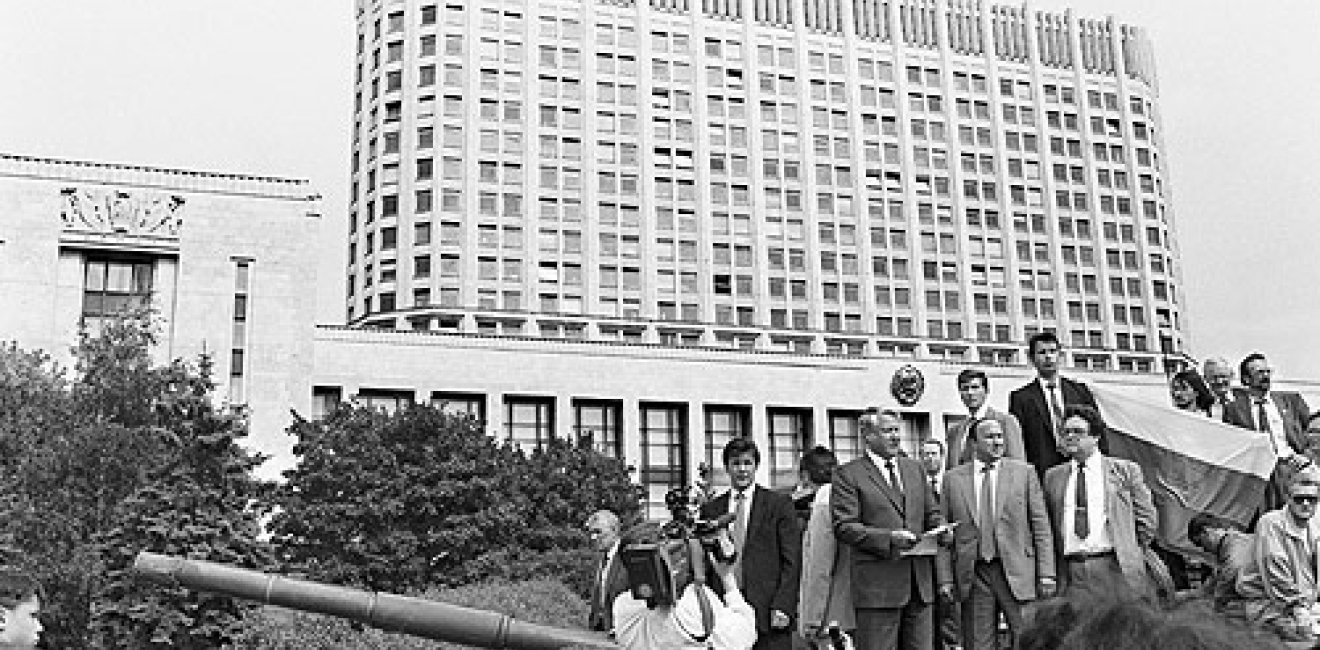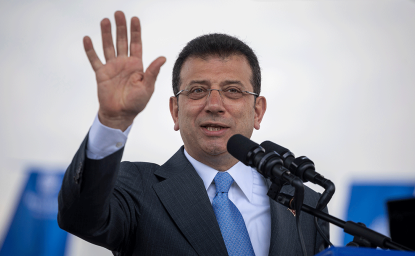25 Years Later: Remembering the Collapse of the Soviet Union
The reformist promise of late August 1991 gained momentum in the days and months that followed. The communist party dictatorship collapsed, and with it we buried the Soviet Union itself.
The reformist promise of late August 1991 gained momentum in the days and months that followed. The communist party dictatorship collapsed, and with it we buried the Soviet Union itself.

On the morning of August 19, 1991, I stood by the window of the presidential office in the Russian Soviet Republic’s headquarters building in the center of Moscow, known as the “White House.” There I observed an incredible picture: two long columns of vehicles simultaneously approaching the building; On the left side was a line of dusty, fully armed battle tanks, something never before seen in the city other than for military parades on national holidays, when they were always shining clean. On the right was a cavalcade of sparkling black sedans, carrying on their hoods the flags of Western countries, the one with the Stars and Stripes on its hood in the lead.
The tanks had been ordered against us by a junta of Soviet hardliners, who had placed reformist Soviet president Mikhail Gorbachev under house arrest at his dacha in Crimea, and who were now prepared to use military force to crush the forces of change his reforms had unleashed. The diplomats were coming to show support for those very forces, even at considerable risk to their own safety. This juxtaposition epitomized the choice faced by Russia and the Russian people at that moment, and ever since: to embrace reform, western style democracy, and conciliatory relations with our neighbors, or to be drawn back to militaristic authoritarianism.
That day 25 years ago, the Russian people spoke clear and loud. By noon, thousands of men and women, bearing flowers, banners and musical instruments but prepared to fight with their bare hands if necessary, surrounded the White House. They formed a living wall, and the first ever popularly elected leader of Russia, President Boris Yeltsin, pledged to them to stand for freedom. He made this promise while standing atop one of the very tanks that had been sent by his opponents, with the tank’s crew and other soldiers, and thousands of ordinary Russians, cheering him on. This image, shot by CNN cameras, captured imaginations in Russia and the West: Yeltsin was a symbol of the new Russia, determined to transform Russia from a threat to peace into a friend and partner. Clashes elsewhere in the city killed three young heroes, but within three days the hardliners were defeated.
This juxtaposition epitomized the choice faced by Russia and the Russian people at that moment, and ever since: to embrace reform, western style democracy, and conciliatory relations with our neighbors, or to be drawn back to militaristic authoritarianism.
The reformist promise of late August 1991 gained momentum in the days and months that followed. The communist party dictatorship collapsed, and with it we buried the Soviet Union itself. In its place, in December, a Commonwealth of Independent States, including Russia and Ukraine was peacefully formed based on respect of sovereignty and territorial integrity of each participant. The Russian government undertook bold steps toward transition to a market economy, free and fair elections of government officials, and above all a truly free press.
On February 1, 1992 President Yeltsin and U.S. President George H.W. Bush signed a declaration in Washington, D.C. that, "Russia and the United States do not regard each other as potential adversaries." From that time on, they declared, “the relationship will be characterized by friendship and partnership founded on mutual trust and respect and a common commitment to democracy and economic freedom." Within a year, an agreement was signed to drastically reduce the threat of nuclear war through deep cuts to both sides’ nuclear arsenals. That promising new beginning for Russian-American relations in the early nineties seems hard to believe today.
Unfortunately, Russia failed to live up to its commitments to democracy and economic freedom. What the old guard could not achieve using tanks, they did by sabotaging the new government’s reforms. Entrenched bureaucracy paved the way for crony capitalists who preferred spending the proceeds from oil and other commodities exports in the comfortable West over undertaking hard reform work at home. They left the ordinary people to face the hardships of the transitional period in the custody of an unreformed security apparatus and a resurrected anti-western propaganda machine.
The Russian economy became stuck in between the free market and state domination, with officials reasserting control over media and rigging elections. An ailing President Yeltsin tolerated this backsliding while his appointed successor, former KGB lieutenant-colonel Vladimir Putin, has benefitted from it, especially after his return to the presidency in 2012. No wonder that in that same year, GDP growth stagnated and domestic political tensions worsened.
In response to these difficulties, Putin has doubled down on the anti-reformist course, blaming the United States for stirring up trouble in Russia by supporting the pro-democracy opposition, and for opposing Russia’s freedom of action abroad. The Seizure of Crimea and instigation of armed separatism in Ukraine are only the latest pillars of the Kremlin’s backwards-looking policy. Sanctions imposed by the West in response to those actions, together with Russia’s self-imposed counter-sanctions, have limited foreign trade and investment, which magnifies the hard blow to Russia’s export dependent economy from the collapse in oil prices.
I recall that 25 years ago the oil price was even lower and economic difficulties were enormous. But the mood in the country was different. Today, crisis produces a feeling of decline and a siege mentality against the world. Then, our severe challenges were seen as opportunities to achieve modernization at home and cooperation with the leading countries of the world.
I hope that Americans remember and value the Washington Declaration of 1992. Sooner or later the Russian people will again stand up for their future and the two great nations will come back to building a relationship founded on mutual trust and respect and a common commitment to democracy and economic freedom.
The opinions expressed here are those solely of the author.
The author served as Foreign Minister of Russia from 1991 to 1996, and is a Distinguished Fellow at the Wilson Center in Washington DC.


After more than 50 years as a vital part of the Wilson Center legacy, the Kennan Institute has become an independent think tank. You can find the current website for the Kennan Institute at kennaninstitute.org. Please look for future announcements about partnership activities between the Wilson Center and the Kennan Institute at Wilson Center Press Room. The Kennan Institute is the premier US center for advanced research on Eurasia and the oldest and largest regional program at the Woodrow Wilson International Center for Scholars. The Kennan Institute is committed to improving American understanding of Russia, Ukraine, Central Asia, the South Caucasus, and the surrounding region through research and exchange. Read more



